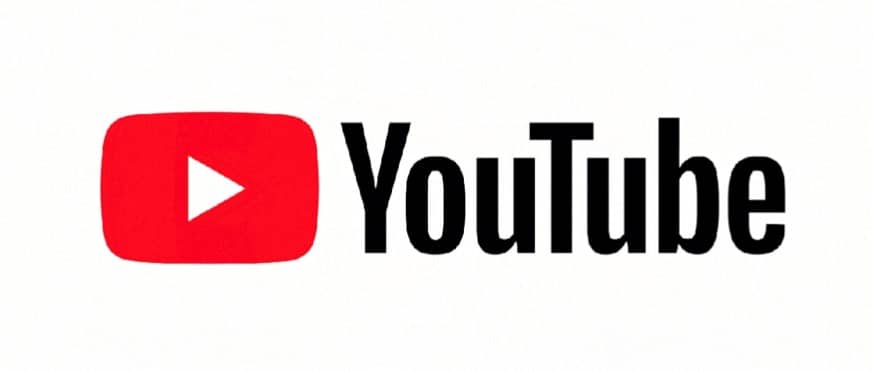
You may think that YouTube is not for your business, maybe because you’re too small or don’t understand the technical side of creating videos? Perhaps you’re not convinced it is a viable addition to your marketing mix?
Take some time to look at these 14 easy to read steps. It may help you decide if YouTube can add value to your marketing and create leads and sales enquiries.
Step 1: 6 easy steps to ‘Create A YouTube Business Account’.
· Sign in to an existing Google account or create a new dedicated account specifically for your YouTube business channel.
· Visit YouTube’s homepage and set up your ‘business channel’ name.
· Complete all the details required for your business account.
· Have your logo artwork or icon artwork ready and save it to your ‘business channel’.
· Complete your channel description where indicated.
· Bearing in mind your customers and what they want to see, set up featured channels and
activities.
And that’s it, you’re ready to start uploading your video content!
Step 2: let’s see how it could work for your business with these easy to understand 13 tips.
- Work out what your audience wants and write engaging titles.
Tell your audience what your video is about from the word to go. Write headline-grabbing titles that sell your core messages, services and products. For example, ‘Learn how to write a business plan’. ‘Free automatic 24 hours call out’….
2. Tell the Search Engines such as Google that your video may appear when searched for and ‘optimise’ the content and descriptions to match search criteria,
If you’re not web savvy or unsure about Search Engine Optimisation (SEO), speak to your web developer about getting found on Google and other search engines. Use the information on this blog to get the conversation started. Discuss the content and topics for your video. You will also need this information when writing the title and description of your video when loading it onto your YouTube channel.
Like any content, your video and its title and description will need to consider keywords, plain English and tags to be better optimised.
3. ‘Talk’ with the YouTube community
Like other Social Media platforms, YouTube is a social space, and many good housekeeping marketing practices apply. For example, you will need to consider getting viewers and visitors to tag, like and share your videos.
When your viewers and visitors interact, it sends a message to YouTube that your videos have a following, and just like other search engines, this will affect your rankings. But think of it as simply engaging with your customers and interacting by replying to their comments and being seen to be listening.
Listening too can be a good way of getting valuable customer feedback. What about making a short video explaining a new product or service and asking for feedback? You’ve nothing to lose but a lot of knowledge to gain.
4. Customise your thumbnails
Creating custom thumbnails on YouTube is very easy and is key to giving your viewer a flavour of what the video is about before they open it.
The reason for creating a thumbnail is that you can specify what image is viewed when the video is uploaded to your channel. The alternative is that YouTube will decide for you which ‘frame’ to use, and that may not offer the best image.
So again, ask yourself what your customer wants to see to make them click to view your video clip. Use the image that says it all in terms of your service or product.
5. Cross-promote your videos on YouTube
As you start to get proficient you will likely already have videos on YouTube that are talking about similar services or products. For example, older videos you may have posted may still have relevant or interesting facts or benefits that will back up your current video. You may be familiar with the terms ‘further reading’ or ‘other things of interest’.
Use links to these and put them into the descriptors of your videos.
6. Target Google search results
YouTube videos are very searchable on Google, and this is not surprising as Google own YouTube! So, bearing this in mind and that after Google, YouTube is the second biggest search engine in the world, this fact is critical.
As mentioned earlier, Search Engine Optimisation (SEO) is a specialist skill, but if you have a good web developer who understands it, have a conversation around optimising your videos and your channel. Working on the principle of getting it found and featured on Google is a good starting point.
Engaging content such as product reviews, ‘how-to’ and trending topics in your product or service sector would be things to consider. If we look at, say, the drink industry, it may be that a Gin maker may ride on the wave of the popularity of Gin Cocktails or in terms of fashion, the latest boots fashioned by an ‘A’ list celebrity may offer an opportunity, or an accountant may refer to the latest digital tax software.
7. Why not create a series based on a theme?
A good idea when creating your videos is to adopt a theme. Think about your service or product offering and develop a descriptive title that might tell your customers about the range of products you offer and the benefits of your products and plan it as a series.
For example, if you were selling building products, you could feature your ‘roofing range’ with Part 1 featuring the tiles you offer, Part 2 the benefits of the tiles you offer and Part 3 (which you have mentioned throughout as ‘on its way’) is an offer on ‘buy now for a special price’. Follow this up with a call to action.
You can imagine this simple principle being adopted on almost any product or service. Think or say a Wine Club, Part 1 as the range, Part 2 as a clip of the vineyards and wine tasters, Part 3 as a ‘join our special club offer’.
8. Embed your YouTube videos.
Video has been proven to create a higher engagement rate with potential viewers to your social media platforms and your website. That is, they are far more likely to click on video content than just text or images.
You can harness this eagerness to engage by embedding or pasting your videos from YouTube within your website content, blogs and news stories, as well as your social media posts. This is a good idea as hosting on YouTube can mean better search ranking.
Hosting a video directly on your channels and your website will mean a large amount of data on your server, which will mean it will slow your website down. Hosting your video on YouTube with a link means they carry the large data and you enjoy the faster speeds via posting and embedding the link on your platforms.
Google pays particular interest to the download speed of your website when ranking your website, so it pays to make your site quick to download.
9. Regularly publish your YouTube content to social media.
This might seem obvious but often gets overlooked. You must spread the word far and wide, and the quickest and most cost-efficient way of doing that is via your social media channels. Create an exciting thumbnail or graphic effect, copy the link from your YouTube video by clicking on ‘share’ and saving the link.
The best way to do this is by pasting your video link to your website and then clicking on the web page that contains it. You then copy the address/link to that page from your search bar and click on your social media page to create the post.
This offers you the chance to create ‘backlinks’, in other words sending users to your website and your social media posts will give you better website traffic and better traction when searched for by search engines such as Google.
A few quick ideas to get you thinking:
10. Increase engagement with calls to action.
Don’t be afraid to keep reminding viewers or visitors to a call to action such as ‘phone now, ‘click here to email or visit our website’ or ‘ask an adviser now’, this can be achieved by the titles on the screen or in the voice-over or both. Why not ask the viewer a question and maybe offer a reward for emailing an answer or enquiring?
11. Give live streaming a try.
It’s always a tricky job to ask someone who is camera shy to live stream, but it can be easier than you think and not that overwhelming. Think of those times when you’ve launched a new product or service? You could have just filmed a clip of the vital moment, especially if you had pre promoted the fact that it was going to happen.
Businesses attend many events and seminars. With permission from the presenter of the event, why not film a clip of the event or interview the speaker after say a seminar?
Why not live stream your team at work from the shop floor, getting out critical deliveries or completing key components or orders?
Things you might try:
12. Run a contest or giveaway.
As we have discussed, many of the social media principles apply to YouTube and getting viewers and visitors to share can be an essential part of your marketing strategy. For example, suppose you are looking for feedback on a new product or service or trying to sell off stock. In that case, an initial giveaway as a stimulus might help to get the video shared amongst your desired target audience.
Another idea could be to work with an associated business and offer a contest with an appropriately valued prize. This may not suit all sectors and businesses, but the principle is the same, you can ask them to share your video.
In the case of businesses services, the value or currency of your offer as a prize could be knowledge. Why not look at access to a valuable business report or industry data or to further training or Continual Professional Development (CPD) credits?
It’s essential once you’ve tried any of these promotions that you measure your return on your investment (ROI) in deciding whether it was worthwhile and resulted in new or renewed business and sales.
NB: Make sure you’re following YouTube’s policies on competitions.
And if you have a budget:
13. Running a paid YouTube ad campaign
If you’re a small business with no budget, this might be a ‘nice to have but, no can do’; however, there’s no harm in you understanding how it works. You may be looking to grow your business, and this knowledge of YouTube ads may be enlightening.
YouTube offers a range of options:
- Display ads: You’ll notice these on the right-hand sidebar of videos, but only if you view them on a desktop.
- Overlay ads: You’ll notice these displayed on the bottom part of a video. Again only on desktop.
- Skippable and non-skippable video ads: You’ll notice these ads showing up before, during or after a video. They often offer you to ‘skip after five seconds’, however with non-skippable ads; you will have to watch all the way through before the video is available to be viewed.
- Bumper ads: With these 6-second ads, they are non-skippable and again means the ad has to be viewed in its entirety before the customer can view the video.
- Sponsored cards: These are cards that get displayed within relevant videos. You can use them to promote your products or other content.
For further information on Antur Cymru Enterprise and Telemat IT Support and their services, log on to https://anturcymru.org.uk or https://www.telemat.co.uk.



